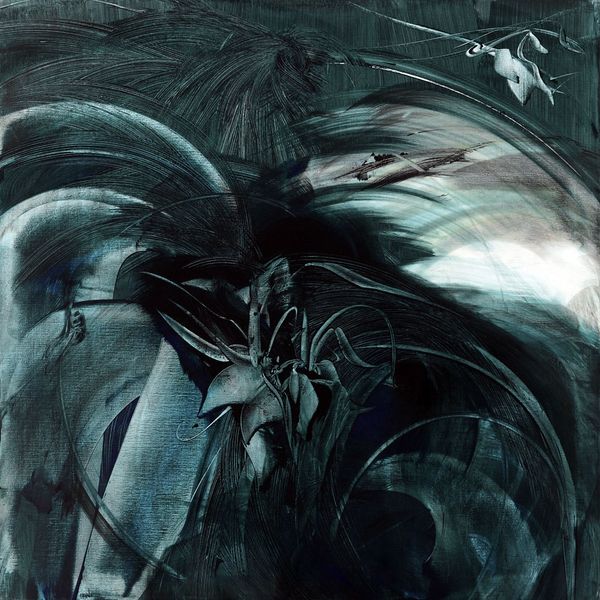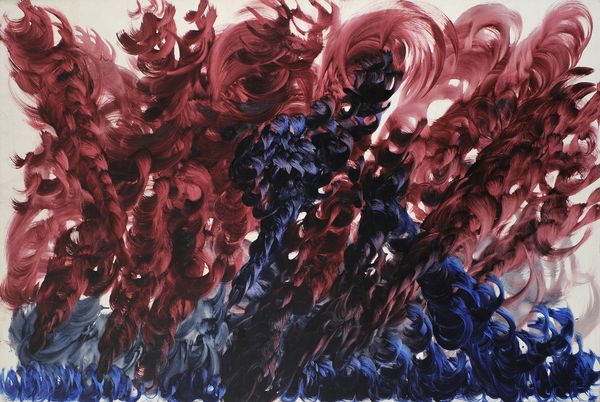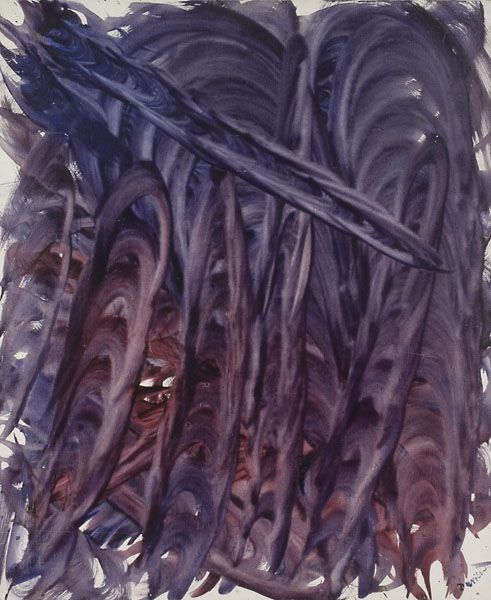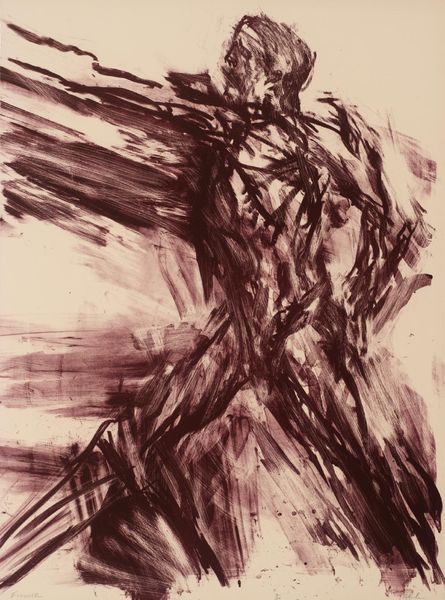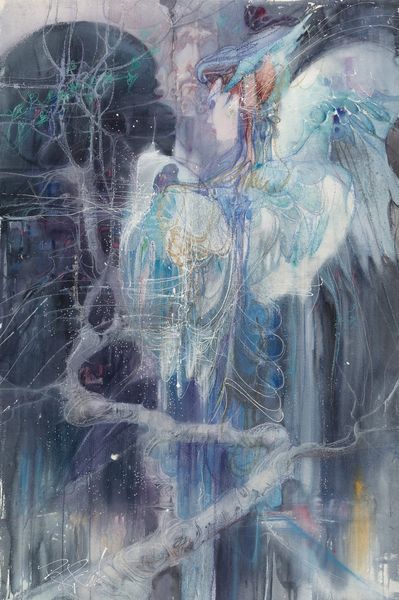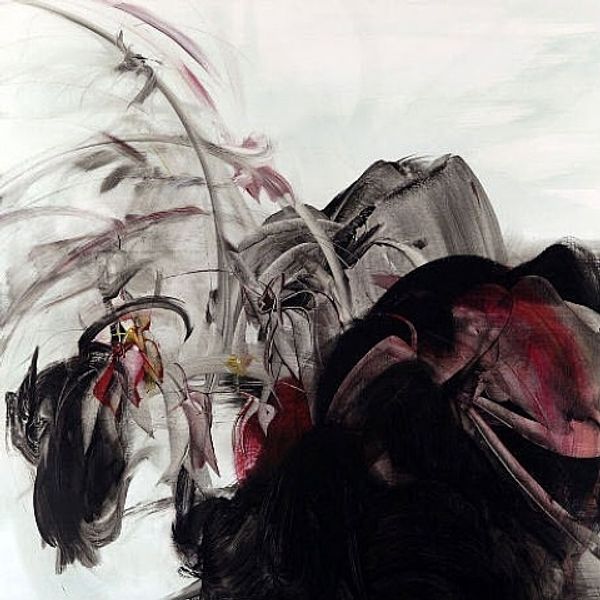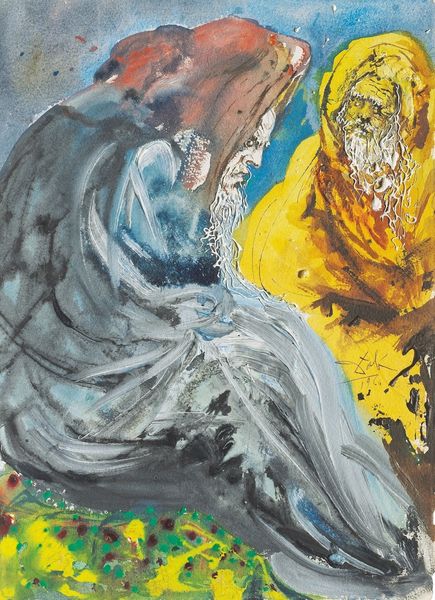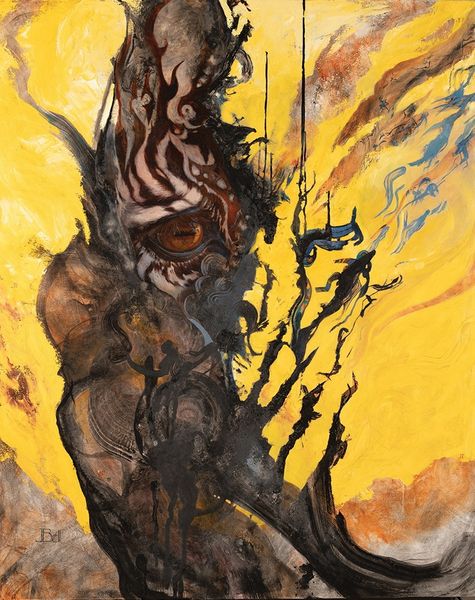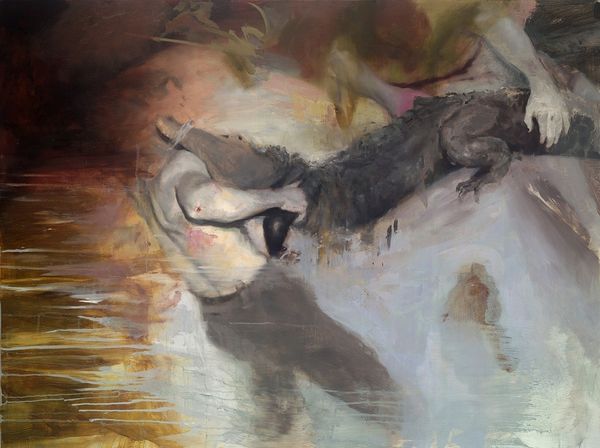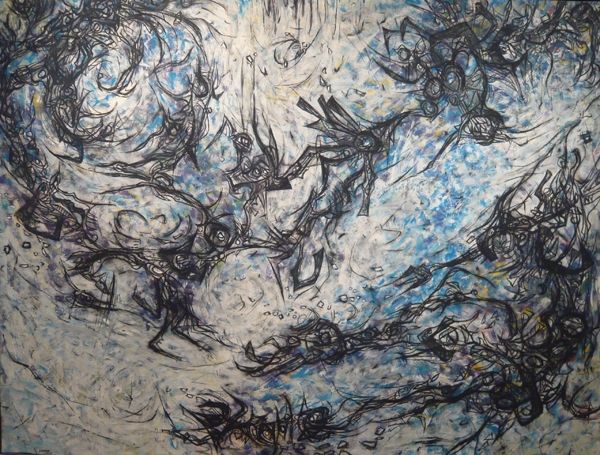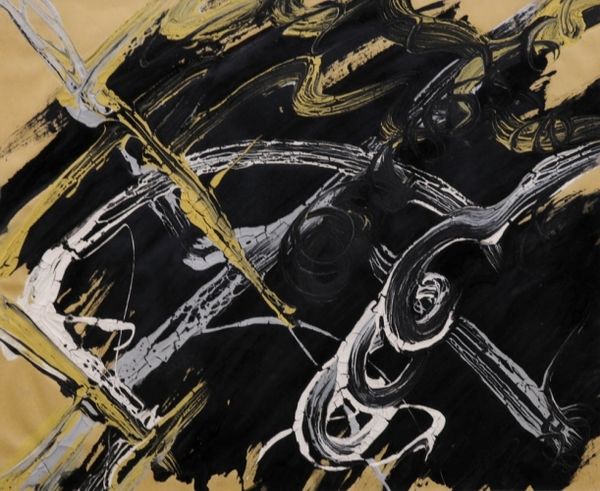
Copyright: Rene Duvillier,Fair Use
René Duvillier created this painting, "La Tramontane," using swirling brushstrokes of blues and purples. The painting is named after a regional wind, hinting at its dynamic and forceful character. Abstract Expressionism emerged in the United States after World War II, influenced by European modernism and the socio-political anxieties of the Cold War. Duvillier, however, brings a European sensibility to the style. Although he uses abstraction, the title suggests an engagement with landscape, and with a particular sense of place. The "Tramontane" wind is a cultural touchstone in southern France, associated with clarity and energy, and also with a certain starkness. Is Duvillier using the style of American Abstract Expressionism to explore a specifically European relationship with the land? To understand this fully, a researcher might explore Duvillier’s biography, looking for connections to southern France, as well as the critical reception of his work in its specific time and place. Ultimately, the meaning of this painting is tied to the cultural and artistic contexts in which it was created and viewed.
Comments
No comments
Be the first to comment and join the conversation on the ultimate creative platform.
